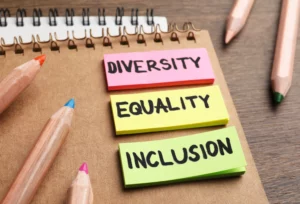Among the many roles in an organization, leadership is arguably the most influential one. As years pass, new technologies and strategies keep bringing shifts in perspectives.
This means that leadership styles and strategies also need to evolve as well in order to suit the different needs of the industry.
The traditional, “top-down”, authoritarian approach has long become outdated. To uncover the full potential of a diverse and modern workforce, new leaders need to look for innovative strategies.
Democratic leadership aims to foster an environment of collaboration, inclusive decision-making, and mutual respect.
This leadership style proves to be more progressive than traditional systems while driving employees to take ownership, continuously innovate and succeed further.
Leaders that intend to inspire their co-workers and unite diverse perspectives might gain an advantage by embodying democratic leadership.
What is Democratic Leadership?
At its core, democratic leadership is a participative management approach that values every team member’s input.
Rather than dictating from above, democratic leaders create a culture of trust, facilitating group discussions, and involving employees in key decisions that impact the organization.
This philosophy stands in contrast to traditional autocratic models, where authority is centralized and subordinates are expected to simply follow orders.
The origins of democratic leadership can be traced back to the early 20th century, with pioneering psychologist Kurt Lewin’s groundbreaking studies on group dynamics.
Lewin demonstrated that teams led democratically exhibited lower levels of aggression, higher motivation, and superior task performance compared to their authoritarian counterparts.
Since then, this inclusive style has gained widespread recognition as a driving force behind innovation and organizational excellence.
Key Characteristics of Democratic Leaders
- Open Communication: Democratic leaders foster a culture of open dialogue, actively soliciting diverse perspectives and feedback from team members across all levels.
They listen attentively, make employees feel heard and valued, and create safe spaces where ideas can be freely expressed without fear of judgment or repercussions.
This open exchange enriches the team’s collective knowledge and understanding. - Collaborative Decision-Making: Rather than ruling with an iron fist, democratic leaders embrace a facilitative approach to problem-solving and decision-making.
They bring together cross-functional experts, encouraging robust discussions that examine issues from multiple angles.
Through structured brainstorming, democratic voting, or consensus-building, these leaders synthesize the group’s collective wisdom to arrive at well-rounded solutions that have buy-in from those tasked with executing them. - Trust in Team Expertise: At the heart of democratic leadership is a deep-seated trust in the capabilities and expertise of team members.
Rather than micromanaging or dictating top-down directives, these leaders empower employees to take calculated risks, experiment with new approaches, and think creatively within their respective domains.
They provide the autonomy and psychological safety for individuals to reach their full innovative potential. - Transparency: Democratic leaders prioritize open communication and radical transparency.
They keep team members informed through regular updates, openly sharing context, thought processes, and rationales behind key decisions.
This level of visibility breeds trust, understanding, and a shared sense of ownership over the organization’s direction and success metrics.
Take Satya Nadella, for instance. As CEO of Microsoft, Nadella has been widely praised for his democratic, inclusive leadership style that emphasizes “one Microsoft” – a unified culture of innovation fueled by open collaboration across teams.
Benefits of Democratic Leadership
- Increased Employee Engagement: By giving employees a legitimate voice and stake in organizational processes, democratic leadership cultivates an environment where individuals feel truly valued and invested.
When team members can actively contribute ideas, provide input that tangibly shapes decisions, and see their perspectives respected, they experience a profound sense of empowerment and motivation.
This heightened engagement translates into superior morale, reduced turnover rates, and a workforce passionate about driving the company’s success. - Unleashed Innovation Potential: Diversity is a wellspring of creativity and innovation. Democratic leadership unlocks this potential by encouraging the free flow of varied perspectives during ideation and problem-solving sessions.
Employees from different backgrounds, disciplines, and lived experiences bring unique insights to the table that may have been overlooked or suppressed in traditional top-down hierarchies.
Through open brainstorming and collaborative incubation, paradigm-shifting solutions can emerge that disrupt existing models and propel the organization ahead of the competition. - Improved Decision Quality: No single individual possesses all the answers. By tapping into the collective intelligence and subject matter expertise residing within the team, democratic leaders ensure that decisions are well-rounded, fully informed, and pressure-tested from multiple vantage points.
Rather than relying solely on the limited knowledge of an individual authority figure, key organizational choices benefit from the combined wisdom of cross-functional specialists who can pinpoint potential pitfalls, identify overlooked opportunities, and refine strategies for optimal outcomes. - Shared Ownership and Accountability: When team members have an active hand in shaping initiatives and outcomes, they develop a vested interest in ensuring successful execution and results.
The simple psychological principle of increased buy-in drives individuals to go above and beyond, holding themselves and their peers accountable for delivering on collective commitments.
This shared sense of ownership fosters an organizational culture of proactivity, personal responsibility, and tireless dedication to achieving established goals.
However, these hurdles can largely be overcome through proper implementation frameworks, decisive facilitation by leadership, and an organizational culture of respect for the democratic process.
Democratic Leadership vs Participative Leadership
While democratic leadership and participative leadership share some similarities in their inclusive, employee-empowering approaches, there are distinct differences worth noting.
Participative leadership primarily focuses on involving employees in the decision-making process itself.
Leaders still retain ultimate authority, but seek out team input and buy-in before finalizing decisions. This creates a sense of ownership, but within boundaries defined by leadership.
Democratic leadership, on the other hand, takes the involvement further by truly distributing power and control across the team.
Final decisions are made collectively through majority rule, voting mechanisms, or consensus-building rather than stemming from a single authority figure. Team members have an equal voice and stake in the outcomes.
Another key differentiator lies in the flow of ideas. Under participative leadership, the leader typically originates ideas which team members then react to and refine.
Conversely, democratic leadership encourages a bottom-up ideation process where innovative concepts can emanate from any team member.
While both styles drive engagement over autocratic command-and-control models, democratic leadership pushes the boundaries of empowerment further.
When implemented effectively alongside proper structures, it can unlock breakthrough creativity and unparalleled team ownership.
However, it requires an even higher degree of trust in subordinates and a willingness to fully decentralize authority.
Whether deploying participative or democratic approaches, organizations can reap transformative benefits by giving employees a legitimate voice in the decisions that steer the company’s future.
Closing Thoughts
Since digital platforms have become essential for organizations, it has consequently become imperative to scale democratic leadership in a virtual setting.
Inclusive tools like cloud-based whiteboard and anonymous polling features make democratization of ideas possible. This way decision-making is distributed across the team.
When diverse groups align to take part in decision-making, new perspectives become visible. Therefore, democratization results in better outcomes as a whole.
It seems as though this kind of leadership style will integrate machine learning and advanced analytics in order to enhance teamwork and collaboration.
To harness collective efforts and intelligence and identify solutions, AI will soon become an important part of the process.
Democratic principles serve as a revolutionary idea for adaptation in a constantly changing environment.
This leadership style empowers open collaboration, builds mutual trust and encourages shared responsibility, thereby leading to better innovation and increased engagement.
With any given approach there are pros and cons. However, this leadership styles proves to be effective in the growing diverse and modern workforce.
Democratization and effective collaboration enables better utilization of every employee’s talents. Ultimately this method also makes sure the whole team shares a united vision.
New leaders are encouraged to consider democratic leadership to achieve impactful outcomes.





